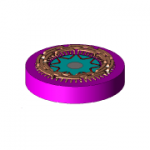IPM Motor
- Sort condition
- Newest first
- Oldest first
- Large number of views
-

[L-MO-108] Motor Performance Evaluation Considering Control
At the motor component design stage, motor performance is evaluated using an ideal sinusoidal current.
-

[L-OP-107] Parameterize the Number of Poles and Slots
In the initial stage of motor design, combinations of various motor types, numbers of poles, and numbers of slots are considered to find a design that meets the requirements. When…
-

[L-MO-106] Prototype and Performance Evaluation with Model-based Efficiency Map (Accuracy Priority Mode)
The maximum efficiency of the drive motor for EV vehicles exceeds 95%. As further efficiency improvement is in the order of 1%, the efficiency error with the actual machine in the…
-

[L-MO-105] System Design with Model-based Efficiency Map (Speed Priority Mode)
Electrical Vehicle drive require high efficiency of 95% or more over a wide operating range.
-

[W-SE-113] Reduction of Calculation Time Using Equivalent Circuit Model
In electrical machine design, the use of coupled analysis between the electromagnetic FEA and the motor drive control circuit is necessary in order to have an understanding of the…
-

[L-MU-91] NVH analysis of EV drivelines with JMAG and Romax Nexus
NVH is the one of most critical issues in the drivelines development of EV/ HEV. There are several points to be considered for the NVH analysis of the driveline. To evaluate the N…
-

[JAC255] Evaluating the N-T Curve of an IPM motor Using 3D Correction
In this example, obtains N-T curves using the correction function.
-

[L-SE-59] Detailed Modeling for Higher Harmonic Loss Analysis
In IPM motors driven by PWM inverters, eddy current losses occur due to carrier higher harmonics. For higher efficiency, it is important to evaluate higher harmonic loss at design…
-

[L-MO-54] JMAG-Express Online
JMAG-Express Online is a Web service to support your motor design work anytime, anywhere.
-

[L-OP-61] Smooth and robust optimization process in JMAG
The optimization is indispensable in machines design. Especially the optimization must consider not only the magnetic design issues but also the mechanical and the thermal design …
-

[W-MO-24] Copper Loss Analysis of a Rotating Machine Using the Zooming Method
In this paper, this method is applied to a copper loss characteristics analysis of wires in a 2D rotating machine as well as a loss analysis of litz wires in a 3D rotating machine…
-

[W-MA-47] Toward Practical Application of Iron Loss Analysis Taking Stress into Account
Increasing the accuracy of an iron loss analysis for a magnetic field analysis poses challenges. With conventional iron loss calculation methods, the iron loss characteristics of …
-

[W-MA-50] Effectiveness and Limits of 2D Analysis from Loss Analysis
In electromagnetic field analysis, 2D analysis (FEM) that include iron loss evaluations are widely used as a way to find a balance between finely detailed analysis and convenient …
-

[W-MO-85] Efficiency Map Evaluations Considering Harmonic Loss
In this paper, we propose a method that combines two approaches to calculate the efficiency at various operating points considering the influence of time harmonics and other effec…
-

[W-MB-64] Modeling Loss in JMAG-RT
In this paper, we explain how loss is modeled in a JMAG-RT model.
-

[W-HU-71] Notes on Performance Evaluation and Hardware Selection of JMAG Parallel Solver
This document can be thought of as pointers and precautions for hardware selection and software operation.


